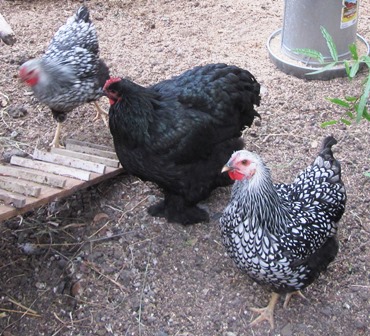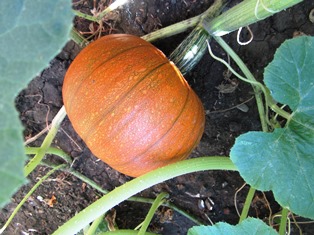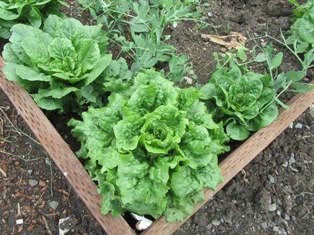Cool Ideas to Help Animals Beat the Heat
Whenever the mercury starts flirting with the century mark on the thermometer, I head for the freezer and take out frozen vegetables and berries to thaw a little before I put them out for the chickens and the wild birds.
Another treat is corn or peas frozen in water in ramekin dishes and offered to chickens on very hot days to help them keep cool. They’ll also like chilled lettuce or spinach leaves, diced fresh zucchini, and crisp cold strips of cabbage.
For pooches, ice cubes made from frozen beef or chicken broth can provide a tasty, cool treat. Chilled carrots, or a frozen ball made from mashed banana and peanut butter can refresh a pooch on a hot day, provided the animal has no peanut allergy. Make sure animals have plenty of clean, cool water to drink always, but especially on hot days.
If you walk with your pet, it’s best to go in the cool of the early morning or late evening and avoid the heat of the day. I take my Siamese on a leash for a walk in the garden each day but will wait until the evening.
Cat paws are sensitive to the heat in stones and concrete surfaces. It’s best to steer clear of those heat-trapping surfaces. Stick to grass. Take your cat out in the early morning or wait for a walk until evening after the mercury starts dropping.
* * *
If you enjoy reading about keeping bees, chickens, and other farm animals or learning about growing heirloom vegetables and fruits or making delicious farm-to-table recipes, check out my newest cozy mystery offerings from Kensington Publishing. Chocked full of all kinds of farmette tidbits, these mysteries are available online through Amazon, Barnes and Noble, Walmart, KOBO, and other online stores as well as traditional bookstores everywhere.
Cool Season Plantings for Soup, Salad, and Pie
This time of year the French sugar pumpkins, persimmons and pomegranates are ready to harvest and that means it’s also time to plant cool season crops.

My summer onions formed large bulbs that I have already harvested; it’s time to replace them with bunching onions
Yesterday I turned the dirt in one of my large planting boxes, added in some aged manure and other soil amendments, and planted red and yellow onions for soups and salads during the fall and winter. I harvested seed from my summer onions and during the winter months will grow the seed in flats for spring planting.
The cool days ahead are perfect soup days and that means carrots, fennel, cilantro, cauliflower, potatoes, and bok choy will also find a place in my fall and winter garden.
In other raised beds and boxes, I’m planting heirloom lettuces, radishes, and spinach. These traditional salad ingredients are best grown during the fall or early spring as hot weather tends to make them bolt.
The pumpkins are ready for pie-making and Halloween carving. The persimmons are perfect for custards or for eating fresh when absolutely ripe (otherwise, the fruits are so tart they will make you pucker). And those lovely red pomegranate seeds are delicious eaten raw or tossed into salads.
For a list of Northern California cool seasons vegetables, check out Sunset Magazine’s edible gardening guide at http://www.sunset.com/garden/garden-basics/cool-season-crops-00400000042441/. If you plant to purchase seed f0r your own cool season garden, I urge you to choose non-genetically modified and open-pollinated seeds so that you can harvest.
 Facebook
Facebook Goodreads
Goodreads LinkedIn
LinkedIn Meera Lester
Meera Lester Twitter
Twitter










